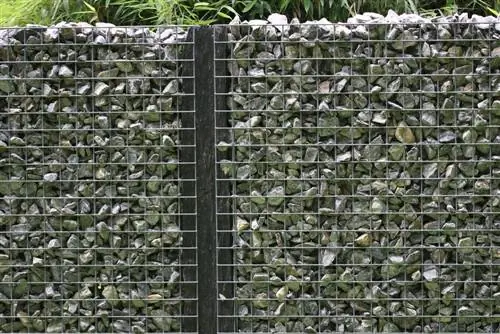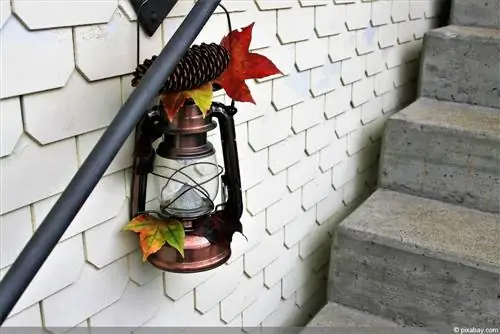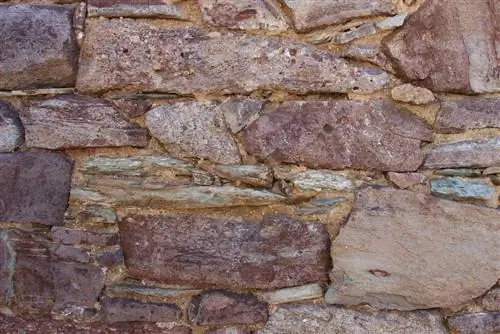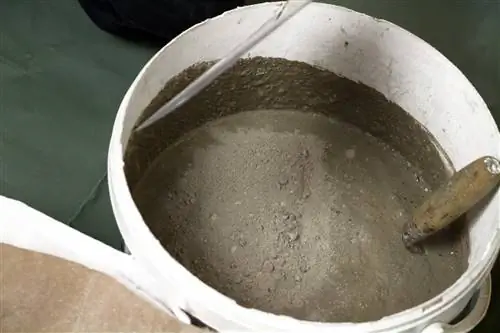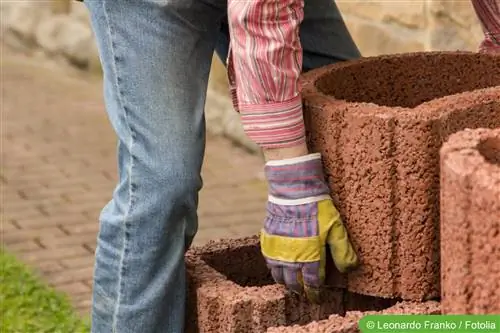- Author admin [email protected].
- Public 2023-12-17 03:39.
- Last modified 2025-01-24 12:45.
Gardens are primarily for gardening and of course for relaxation. But some gardens require additional construction skills from their owners. For example, when a retaining wall is needed to make a slope stable and safe. A professional will do a good job, but it is quite expensive. What options are there to build a suitable support on your own?
Gabion retaining wall
Gabion elements are comparatively newcomers to the building materials market. The stone baskets are often also referred to as bulk baskets, brick baskets or wire gravel boxes. When lined up side by side and filled, the baskets form an impressive wall that is strong enough to safely support slopes.
- can be filled with natural stones
- Rubbish stones made of granite, river pebbles, limestone, etc.
- nature-friendly garden element
- safe shelter for insects and small mammals
Suitable for hobby craftsmen
If the preliminary planning is correct and the elements have been purchased with sufficient width and depth, nothing can really go wrong when building the wall.
- Gabion baskets are easy to set up
- also from skilled hobby craftsmen
- Stability of the wall is not jeopardized
Inexpensive and easily available material
Metal containers for the filling material are now not a rare commodity. They are offered in numerous hardware stores and online shops. The prices are cheap compared to costs incurred for other types of walls. In order to discover the optimal price-performance ratio, a detailed comparison of the providers and the product features is necessary. This is a bit time-consuming, but saves money. Especially when it comes to filling with stones, there is a wide range of options available.
Decorative design element
A slope wall fulfills a supporting role, but not in secret. It is a clearly visible part of the garden. For everyone and at any time. It's good if the eye also enjoys it. Gabion elements are extremely versatile when it comes to creatively designing the look of a wall.
- looks more natural than concrete
- can even be planted/cultivated
- then looks even more natural
- different filling materials available
Tip:
By combining different filling materials, a varied and individual look can be achieved. The wall becomes, so to speak, unique.
Construction challenge
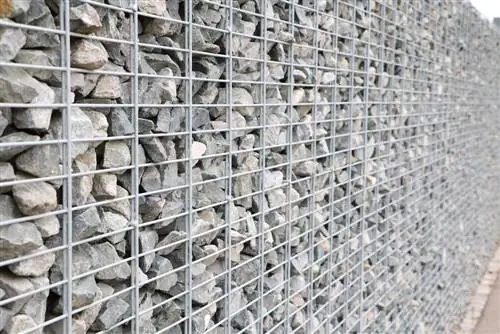
A supporting wall has a task to fulfill that requires strength and stability. Ensuring this is the main challenge for every garden owner.
- sufficient height and depth required
- the steeper and longer the embankments, the more massive the wall has to be
- if applicable Get professional advice when calculating.
Other requirements
A gabion wall needs a secure footing right from the start. Walls less than one meter high and at least 30 cm wide are sufficient with a gravel bed. Larger walls require a foundation.
- stable concrete foundation must be built
- 60 to 80 cm deep
- frost-free foundation is important
- very large walls must be additionally fortified
- In individual cases a drainage layer is required for drainage
Concrete retaining wall
Whether as a retaining wall for slopes, paths or flower beds, concrete used to often be the first choice. Nowadays there are more alternatives available, but a simple concrete wall is still in demand.
Some advantages are obvious
A concrete retaining wall is a long-lasting structure. Hardly anything that happens in the garden can cause their destruction. Once it is installed, it reliably holds its position. Their construction requires little working time. The shape has to be right, there is no need to pay much attention to beauty at first.
- Formwork does not need to be purchased
- they are available for rent
- hauling heavy material is not necessary
- Concrete is usually delivered to the construction site
Expert knowledge is required
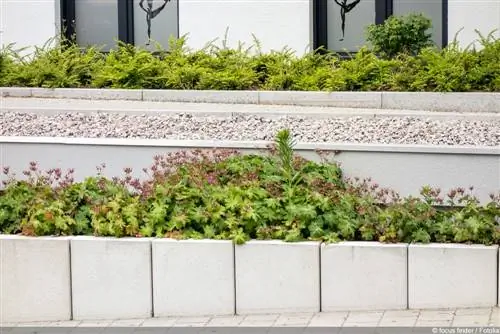
A concrete wall is a pretty simple thing in appearance. However, their construction is quite challenging. Anyone who has little experience in this regard will quickly reach their limits, especially as a hobby bricklayer. The following work steps require precise work:
- building a strip foundation
- Compacting the foundation with a vibrator
- the installation of structural steel mesh
- setting monier iron in concrete
- attaching the formwork
- the layering of gravel between the wall and the topsoil
In addition, a concrete wall must be built at a slight slope to protect a slope.
The dreary look is annoying
A concrete wall is gray and boring. As an artificially created element, it seems a bit like a foreign body among the plants created by nature. Fortunately, this disadvantage can be mitigated with a little effort.
- Painting brings color
- Coatings made of stone or plaster possible later
- Shaking with topsoil and subsequent planting
Retaining wall made of L-stones
L stones look like the letter L, which is where they get their name. They are often also referred to as angle stones. They are already produced and sold in this form. When lined up closely next to each other, they form a closed wall. But what sounds so simple is actually a difficult challenge in the truest sense of the word. The angle bricks are not as easy to install in the garden as Lego bricks in the children's room.
A heavy burden to bear
An angle stone is heavy, very heavy. Even smaller stones with an edge length of 50 cm weigh a whopping 50 kg each. Hauling the stones is difficult, if not impossible, even for a well-trained craftsman. And once the stone has arrived at its destination, it also has to be aligned precisely.
- Self-build only makes sense for smaller projects
- Use of machines is necessary for larger walls
The costs are tough
While the costs remain reasonable for smaller projects, they can explode for large walls. The largest item is the necessary machinery, without which the construction of the wall would not be possible. Five-figure amounts quickly add up. The effort is difficult to estimate and ultimately also the total work costs. If the work is outsourced, a binding cost estimate should be obtained beforehand.
This is what you need to pay attention to when building it yourself
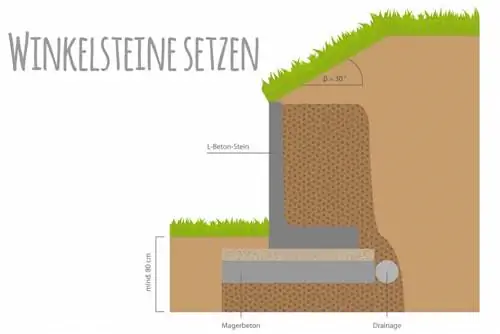
The L-stones have an enormous weight, which has a lasting effect on the surface after they have been set up. To ensure that no shifts occur over time, a suitable substructure is absolutely necessary.
- Substructure must be load-bearing
- Base is a gravel-sand mixture compacted with a vibrator
- A thin layer of concrete is added to the mixture
- only then can the angle stones be placed
An uneven layer of concrete also makes it difficult to align the top edges of the stones evenly.
Tip:
You can rent a vibrator for compacting the gravel-sand mixture on a daily or hourly basis from many hardware stores.

